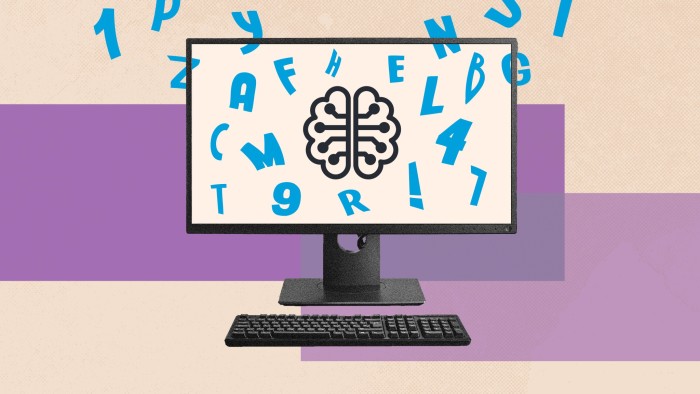Stay informed with free updates
Simply sign up to the Artificial intelligence myFT Digest — delivered directly to your inbox.
The food pill, which provides a full meal in a capsule, has long been a staple of science fiction. Now, mass producers of food for thought have an equivalent: myriad tiny gobbets of thought leadership, tailored by artificial intelligence to your interests and directed to inboxes everywhere.
Thought leadership was already “a great river of swill” in 2017, when I last complained about its remorseless expansion. Ah, those heady, innocent days! With the help of generative AI, it is now a roaring, malodorous, torrent.
A new book, The ROI of Thought Leadership, by Cindy Anderson and Anthony Marshall, defines the genre as “distinctive, evidence-based intelligence that gives leaders the insights they need to make better business decisions”. It encompasses consultancies’ white papers, online interactive explainers and polls on topical issues, and ruminative social media posts on platforms from Substack to LinkedIn.
Generative AI, though, is helping people churn out more and more averagely composed, vaguely plausible posts, messages, PowerPoints and infographics.
A search for “AI LinkedIn post generator” yields multiple tools capable of churning out fake thought leadership for nothing. “Say goodbye to the hassle of LinkedIn content creation,” offers one. “[Create] content that positions you as an industry expert,” says another. (LinkedIn says its “most impactful posts . . . come from authentic human insight, not automation”.)
We can’t say we weren’t warned. In early 2023, shortly after ChatGPT was released into the wild, technology entrepreneur Phil Libin observed that “the cost of generating very convincing lies has dropped to zero”.
Most of those calling themselves thought leaders would balk at peddling bald untruths. But thought leadership does generate a return on investment — Anderson and Marshall calculate an average of 156 per cent, “16 times more effective than traditional marketing approaches”. You don’t have to accept the exact calculations to know that if the cost of producing such insights drops, the return will increase.
It is no surprise that Anderson, who works for thinkpiece producer the IBM Institute for Business Value, derides AI-generated posts as “fake thought leadership”. A large language model “can’t create new ideas and it can’t create data”, she told me. “We do tests all the time, using AI to write things that we would normally do, and I’m still faster.”
She and Marshall say thought leaders should be credible authors, offering compelling insights and usable recommendations based on reliable research. Even if it is, essentially, marketing, they say thought leadership must be free of “overt commercial messaging”. The audience for this content, too, should be considered to be discerning: Anderson and Marshall’s surveys suggest senior leaders spend nearly three hours a week ingesting this kind of content, up 50 per cent in the past 18 months, from only five sources on average.
However it will be hard for many would-be influencers to resist the temptation to go beyond these guidelines, especially with the help of an ever-present generative AI assistant.
AI is already threatening a lower tier of ghostwriters, I was told recently, because influence-hungry business leaders can prompt it to create a short book with their name on the cover. If it takes a weekend for a bot to fill a hardback, imagine how much more quickly AI can help them carve out a reputation as viral thinkers on social media.
More scrupulous authors should consider using AI to tailor and amplify their content, according to The ROI of Thought Leadership. Once their credible, original insights are ready, with governance and ethical guardrails applied, AI could help “create tens, hundreds, maybe thousands of individual, hyperpersonalised points of view”, says Anderson, by turning the same broad thoughts into bespoke nuggets aimed at individual recipients.
At the other end of the production line, I picture time-pressed recipients applying their own AI tools to this unstoppable extrusion of ideas, slicing and dicing them into ever-blander, snackable summaries.
Something has to give, and perhaps science fiction has some clues about how to stem the vicious cycle. Rather than pill-sized meal substitutes, this century’s wonder drugs limit our hunger for unnecessary calories. Why not an Ozempic to suppress our appetites to produce and consume the junk food-for-thought of AI? That’s something worth thinking about.
